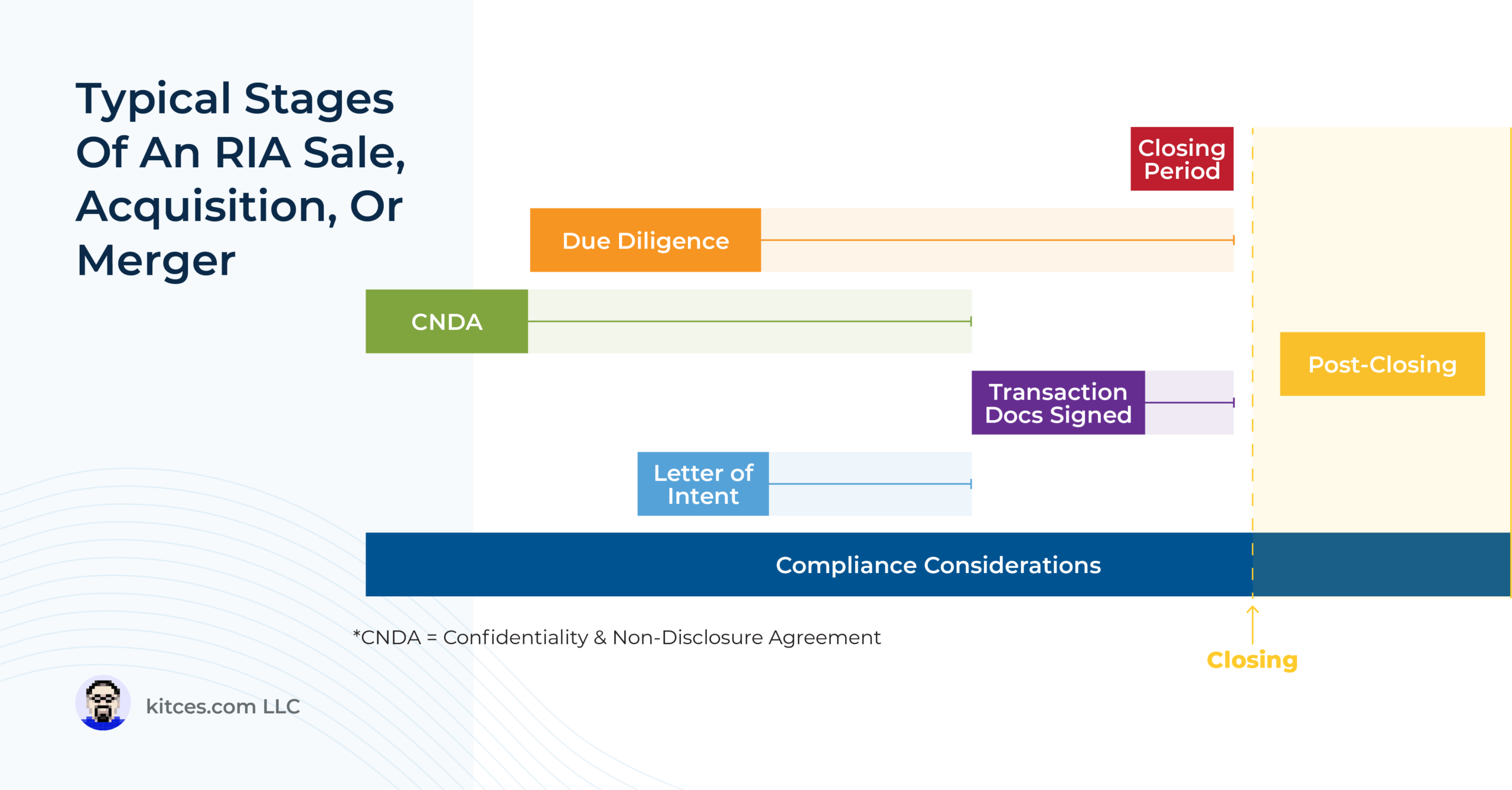For all of the myriad ways financial advisors can structure and run their practices, firm owners generally encounter similar stages in the development of their firms. At some point, solo advisors will need to decide whether to increase their headcount, and an ensemble practice may later evolve into a centralized brand with significant enterprise value. The journey will be unique for each advisory firm owner, but one thing they all have in common is that they will eventually have to divest themselves of their ownership stake, either through a voluntary (or involuntary) dissolution of the business or through the full or partial RIA sale, with the latter naturally being the most economically ideal outcome.
In this guest post, Chris Stanley, investment management attorney and Founding Principal of Beach Street Legal, discusses in depth the various stages of buying, selling, and merging an investment advisory and financial planning business.
The initial step towards the eventual sale of an advisory firm requires the seller to identify a well-suited counterparty, which can be challenging given the population of well-funded serial acquirers who have a material advantage over firm owners, many of whom have likely never bought or sold a business. Once the seller and potential buyer are ready to get serious about a deal, the next step will be to sign a mutual Confidentiality and Non-Disclosure Agreement (CNDA), which contractually obligates the parties to keep any information that is shared (as the name implies) confidential.
From there, both parties can begin their respective preliminary due diligence. Once they are comfortable with the information and documents that have been shared, they can sign a Letter Of Intent that, while still high-level, provides enough detail about the proposed transaction for the seller to make an informed decision about whether to proceed. At that point, the definitive transaction documents are drafted, providing details around items such as equity and/or asset purchase agreements, a possible promissory note, and a bill of sale. Notably, these documents will serve as evidence in any subsequent disputes, making it imperative for both seller and buyer to fully understand the terms.
Once all that work is completed and both parties are satisfied with the terms of the transaction, it’s time to seal the deal and legally bind themselves by signing the contract. This moves the deal into the closing period, where the transaction can be publicly announced and any closing conditions must be met (such as obtaining consent from the seller’s clients to transition to the new owner). Only then can the new owner begin the work of integrating processes and systems and serving their new clients.
Ultimately, the key point is that the process of transferring ownership of an advisory firm is an immense undertaking and is almost always far more intensive and involved than most parties can imagine. However, given that all advisory firm owners will inevitably face the transfer (or dissolution) of their ownership stake, it’s important to consider what a future sale or merger might look like, as it’s far better for potential sellers to understand the steps involved well in advance rather than trying to figure it out on the fly!


